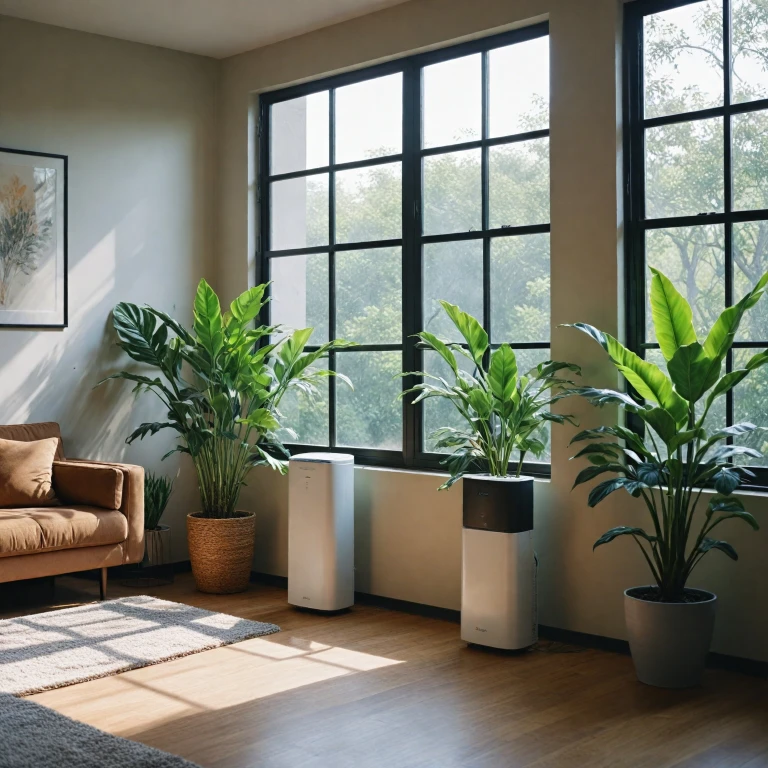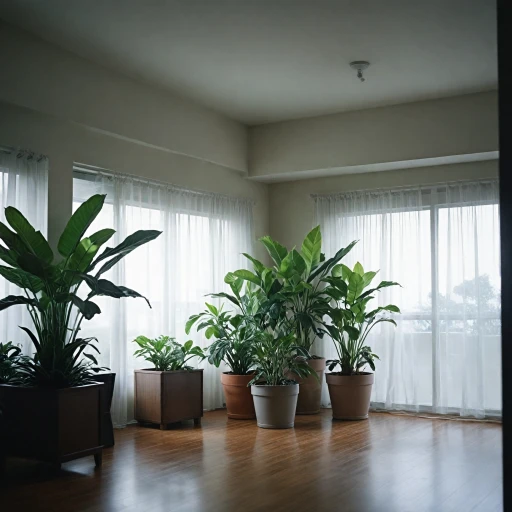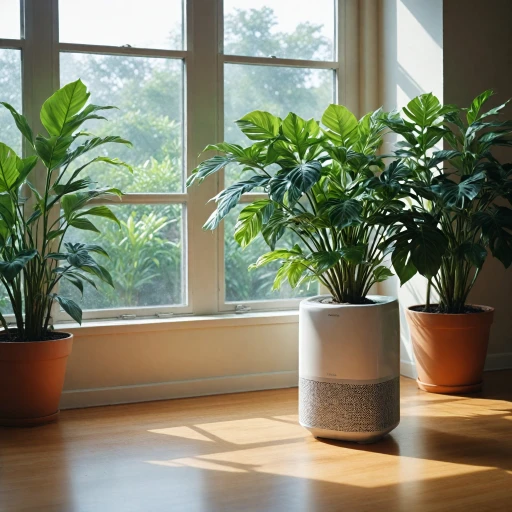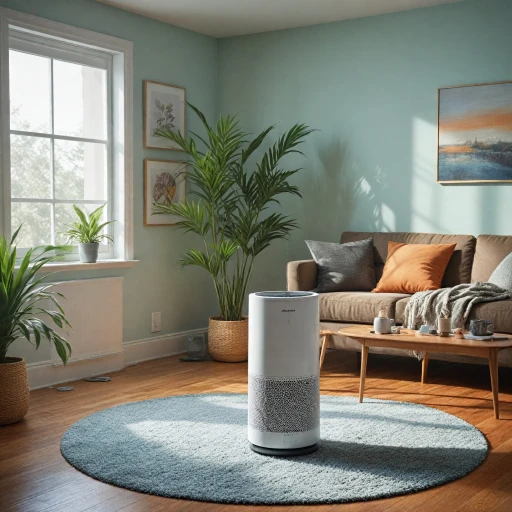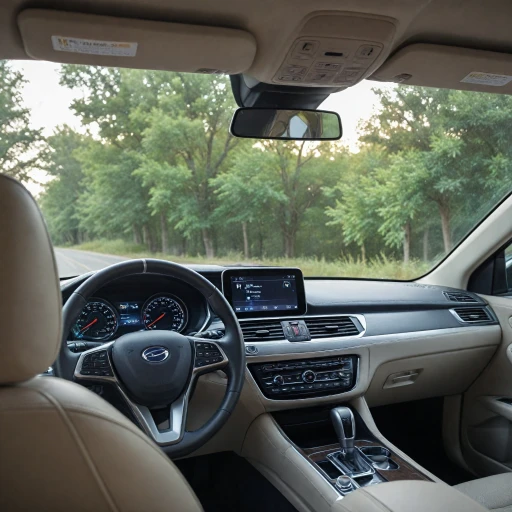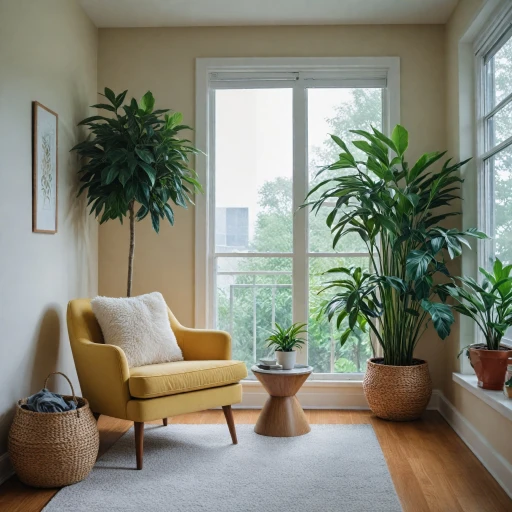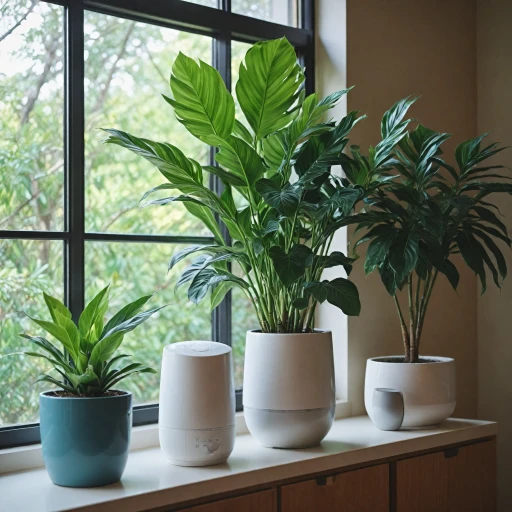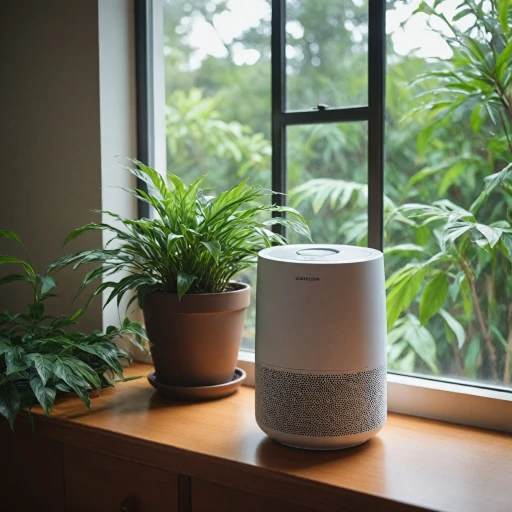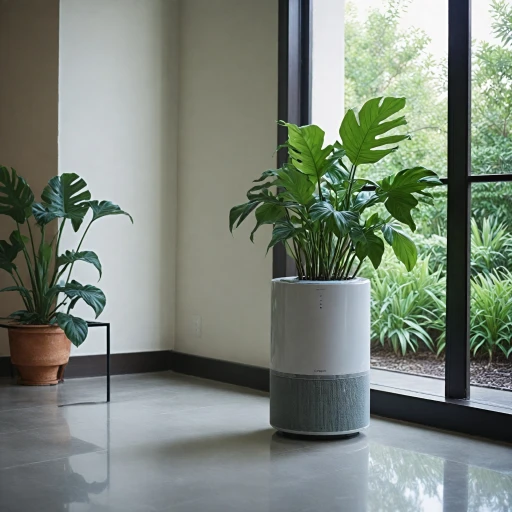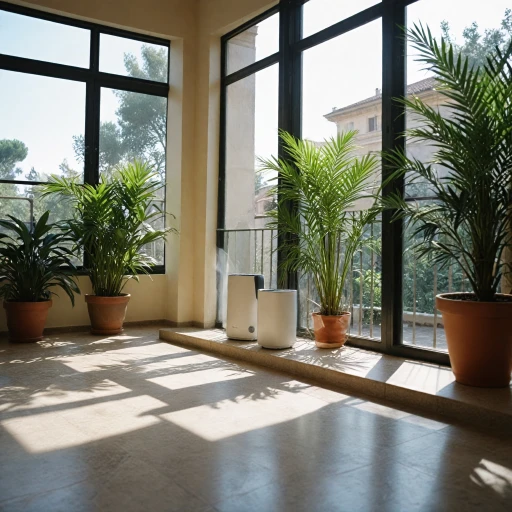
How UV Air Purifiers Work
How Ultraviolet Light Plays a Part in Air Filtration
UV air purifiers are a popular product in the realm of indoor air purification, primarily using ultraviolet light to enhance air quality. Understanding their operation can help you determine if they're the right option for your home. These devices operate by drawing air into the unit where it is exposed to ultraviolet (UV) light, specifically designed to kill or inactivate airborne bacteria, viruses, and germs. This is particularly relevant for concerns like COVID-19 and SARS-CoV-2. The UV light alters the DNA of these microorganisms, rendering them harmless and unable to reproduce. Although UV light is a strong feature, UV air purifiers often combine additional filtration stages such as HEPA filters to trap airborne particles like dust and pollen, enhancing overall air quality even further. The combination of UV and true HEPA filters allows for a more comprehensive approach to air purification. A quality sensor in the purifier may help monitor the air, adjusting the filtration process as needed. While the best air purifiers may come at a higher price, the added efficiency in removing harmful particles and improving air quality justifies the sale price for many users. For those needing a portable air purifier, UV models can be found in extra large or compact sizes to fit any room. Explore more about the advantages of these devices in our detailed guide on understanding the benefits of UV air purifiers. Learn more about UV air purifiers here.Health Benefits of Using UV Air Purifiers
Health Advantages of Utilizing UV Air Purifiers
The inclusion of ultraviolet light in air purifiers offers a multi-faceted approach to enhancing air quality in your home. When seeking to improve indoor air quality, UV air purifiers emerge as a noteworthy option, particularly during concerns related to airborne viruses and health threats like COVID-19 and its variants, such as SARS-CoV. Firstly, let's explore how UV air purifiers contribute to a healthier environment. These purifiers employ ultraviolet light to neutralize airborne bacteria and viruses, effectively reducing the risk of illness transmission within enclosed spaces. By disrupting the DNA of these microorganisms, the ultraviolet light impairs their ability to reproduce, rendering them harmless. This mechanism is particularly advantageous in combating certain pathogens that regular filtration methods might miss. In addition to its powerful germicidal capabilities, UV air purifiers can complement other filtration technologies, such as HEPA filters, to create a comprehensive air purification strategy. By combining ultraviolet light with a HEPA filter or a similar system, the purifier can trap larger particles like dust and allergens while addressing microscopic viruses and bacteria, enhancing the overall filtration stage. This layered approach helps deliver cleaner, healthier air throughout the room, positively influencing overall well-being. Regularly incorporating the use of a UV air purifier can significantly reduce allergy symptoms, improve respiratory health, and promote general health by minimizing exposure to harmful airborne particles and irritants. Moreover, understanding the broader benefits and features of a filter-free air purifier can offer insights into choosing the best air purification method that aligns with your household needs. While the initial price of UV air purifiers may vary based on features and size—ranging from compact portable units to extra-large systems—this investment in health protection, particularly in the wake of pandemics and seasonal flu, makes it a worthy consideration for improving indoor air quality.Comparing UV Air Purifiers to Other Technologies
UV Technology vs. Traditional Filtration Methods
Ultraviolet (UV) air purifiers offer a distinct approach to air purification by targeting airborne pathogens directly with UV light. This method differs significantly from conventional air purification technologies, such as HEPA filters and activated charcoal, which primarily focus on trapping particles and odors. To understand where UV technology fits within the spectrum of air purification solutions, it's useful to compare its performance and benefits to other systems.
HEPA Filters: The Gold Standard in Particle Filtration
HEPA filters are widely recognized for their ability to capture at least 99.97% of airborne particles as small as 0.3 microns. These filters are highly effective at improving indoor air quality by removing allergens, dust, and larger particulate matter. However, unlike UV air purifiers, HEPA filters do not directly neutralize bacteria and viruses. For those prioritizing the elimination of pathogens like COVID-19 or SARS-CoV, a combination of UV and HEPA technologies can deliver comprehensive coverage.
Charcoal and Activated Carbon Filters for Odor Management
Devices that utilize activated charcoal or carbon filters excel at absorbing odors and volatile organic compounds (VOCs), providing relief from unwanted scents in the home. While this filtration stage complements UV and HEPA filters, it doesn't address pathogens directly. To learn about the specific advantages of using activated charcoal, find more insights in our detailed article on charcoal filter air purifiers.
Considering the Best Solution for Your Needs
Choosing the ideal air purifier involves evaluating your specific needs, budget considerations, and the nature of pollutants and pathogens present in your environment. For households dealing with persistent odors in addition to germs, a multi-stage air purifier that includes both activated carbon and UV light technologies might be the best choice. Conversely, environments with a primary concern for allergens may lean toward HEPA air purifiers.
Ultimately, many consumers find that a blend of these technologies delivers optimal results. With the right balance of filtration, you not only enhance air quality but also protect health by addressing various airborne threats, from bacteria to viruses. With a range of products in the market, such as those incorporating a quality sensor and UV purifier light, finding the right balance of features at the best air purifier price becomes a manageable task.
Choosing the Right UV Air Purifier for Your Home
Considerations for Selecting an Optimal UV Air Purifier
Choosing the right UV air purifier for your home involves evaluating multiple factors to ensure the unit meets your specific needs and delivers the best air quality possible. Here are important considerations you should keep in mind:- Room Size and Coverage: Determine the size of the room you intend to use the purifier in. UV air purifiers, like other purification devices, are designed to work efficiently in specific room sizes. Check the product specifications for coverage recommendations to ensure you’re getting the maximum benefit.
- Filtration Technology: While UV light is effective at killing bacteria and viruses, pairing it with a HEPA filter increases the purifier’s efficiency by trapping airborne particles. Look for a purifier that offers multi-stage filtration. A true HEPA filter adds an extra layer of filtration, capable of capturing particles as small as COVID-19 and sars cov particles.
- Air Quality Sensors: Units equipped with quality sensors can automatically adjust their operation based on real-time air quality readings. This feature ensures that the purifier light is only used when necessary, optimizing performance and minimizing unnecessary energy use.
- Noise Levels: Consider models with adjustable fan speeds. Some UV air purifiers operate more quietly than others, a feature you’ll appreciate in bedrooms or offices. Look for noise level specifications and opt for a purifier that offers a comfortable noise level.
- Portability and Size: If you need a purifier that can be moved between rooms easily, consider a portable air unit or one that is extra large with wheels. Factor in the dimensions of the purifier to ensure it fits in your chosen space.
- Cost and Warranty: Compare purifiers based on their regular price and sale price opportunities. Investing in a slightly higher priced but well-rated unit, with a solid warranty and proven UV light air purification technology, can improve your home’s air quality effectively over time.
Maintenance and Care for UV Air Purifiers
Maintaining Optimal Performance with Routine Care
Keeping your UV air purifier in top condition is essential for ensuring it continues to effectively filter out harmful bacteria and viruses from your indoor air. Regular maintenance not only guarantees optimal performance but also extends the lifespan of the product, providing you with continued health benefits.- Check and Replace Filters: While UV air purifiers predominantly use ultraviolet light to kill germs, many models also incorporate additional filtration systems like HEPA or true HEPA filters. It’s important to regularly check the filter condition and replace it as recommended by the manufacturer. A clogged filter can significantly reduce the air quality in your room.
- Clean the UV Light Components: Dust and dirt can accumulate on the UV light bulb and reduce its effectiveness. Depending on your model, you might need to clean or replace these bulbs periodically. Follow the manufacturer’s guidelines to ensure proper handling and frequency of replacements.
- Monitor the Air Quality Sensor: Some purifiers are equipped with air quality sensors that provide real-time feedback. Keep the sensor clean to ensure accurate readings. This will help you gauge when your purifier is working hardest and when it’s lagging, allowing you to adjust settings accordingly.
- Inspect the Unit for Wear and Tear: Regularly examine your UV air purifier for any signs of physical damage or operational issues. If any component seems off, it might affect the overall air purification process.
- Follow Product-Specific Guidelines: Every air purifier model may have its specific maintenance needs. Adhering to the user manual for your specific product will help maintain the efficiency and effectiveness of the purification system over time.
Addressing Common Concerns About UV Air Purifiers
Addressing Potential Concerns with UV Air Purifiers
When considering the implementation of UV air purifiers in your home, it’s natural to have some concerns. Here, we address some of the most common issues often raised by consumers.- Safety of Ultraviolet Light
- Airborne Particles and Filtration Effectiveness
- Maintenance and Costs
- Health Implications
